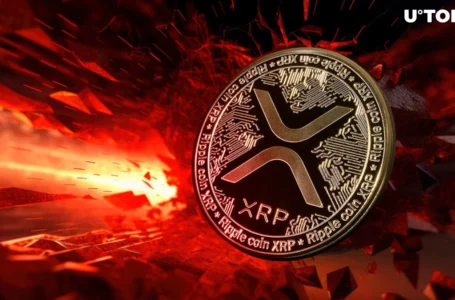
When you compare Algorand (ALGO) and Polkadot (DOT) it’s easy to see that there are some similarities in terms of functionality and approach. However, upon closer review, these networks are built very differently and go about solving crypto issues uniquely. Here’s some valuable insight into Algorand vs. Polkadot.
What is Algorand?
Algorand is a cryptocurrency and layer-1 blockchain ecosystem. The network was designed to improve Dapp development and scalability. The network’s founder is Massachusetts Institute of Technology professor, Silvio Micali. He is a Turing award-winning computer science that seeks to merge DeFi and CeFi. Algorand was founded in 2017 and launched in 2019.
What is Polkadot?
Polkadot is a multi-chain blockchain environment that was built to solve many of the most common issues faced by Dapp developers. The network provides a high level of interoperability between native networks and sovereign blockchains. Polkadot makes it possible to integrate data from public and private blockchains to improve Dapp functionality.
What Problems was Algorand Built to Alleviate?
Algorand seeks to eliminate some of the biggest issues users face in the blockchain market. The main concern for developers is to eliminate centralization. The current state of the market leverages a host of third parties and gatekeepers. Each one of these groups makes it more difficult for the average person to be successful.
Algorand leverages the full power of blockchain technology to improve ROIs and provide an open economy to users. The network improves decentralization by streamlining the core processes of blockchain use. You can send value internationally in seconds using Algorand.
Streamline Onboarding
Algorand developers want to streamline the onboarding process as well. In the past, it was very difficult for new users to navigate the DeFi sector. The terms and features were different and the need to hold network tokens for gas was often confusing. Algorand eliminates the technical roadblocks to adoption in multiple ways.
The network introduced ‘no code-required’ smart contracts which makes the entire process of creating blockchain assets easier. Users can tokenize, transfer, and create digital assets without previous experience. Additionally, developers can easily program conditions on any instrument of value using the system. This structure makes it simple to create anything from NFTs to security tokens.
What Problems was Polkadot Built to Alleviate?
Polkadot was created to help solve issues surrounding interoperability. There are lots of blockchain networks. However, most are unable to communicate data seamlessly. Polkadot introduces a multi-layered structure that streamlines interoperability.
This approach improves Dapp development. Developers spend a lot of effort recreating protocols that exist on other networks already. Polkadot enables them to leverage these systems to improve usability. Users can send any type of data between private and public networks using Polkadot features.
Polkadot’s developers wanted to tackle onboarding issues as well. The chain streamlines the onboarding process for blockchain developers who are familiar with or already have projects on Ethereum. They can also use the relay chain to connect to their Ethereum creations directly.
How Does Algorand Work?
The Algorand blockchain operates as a permissionless, payments-focused, layer-1 blockchain. The network leverages a PoS (Proof-of-Stake) consensus algorithm to validate transactions. The network enables users to stake their tokens to participate in the validation process in exchange for rewards.
Algorand features a developer-friendly interface that empowers creators to make new types of applications. This flexibility helps to push crypto adoption forward. The network also integrates a host of DeFi features like AlgoFi (a p2p lending protocol). Users can secure APRs by lending funds to others via an automated smart contract.
Token – ALGO
ALGO is the utility token for the Algorand ecosystem. Developers need to use ALGO to pay network gas and transaction fees. The token has a maximum of 10,000,000,000 with new tokens issued to stakers as rewards. Uniquely, anyone can stake in ALGO. The minimum is only 1 ALGO.
Algorand makes it easy to launch digital assets, and major institutions are taking notice. In early 2023 Algorand inked a deal with the National Australia Bank to launch a new stablecoin on the network. This partnership marked a major milestone for the network in terms of merging traditional and blockchain finance.
How Does Polkadot Work?
Polkadot’s ecosystem can be broken down into a few key components. The network operates a relay chain that is responsible for consensus and cross-chain functionalities. It leverages the grandpa consensus mechanism to remain valid. This system uses two mechanisms that separate block production and finality.
Polkadot supports all types of blockchains. Within its ecosystem, there are Parachains and Parathreads. Parachains are standard networks. They are usually built for specific use case scenarios. As such, they are very unique with some having special governance models or even being private. Notably, parachains have the full flexibility to create new blockchain assets and leverage altered consensus mechanisms to support their goals.
Parathreads are a Critical Component
The next type of network in play in the Polkadot ecosystem is parathreads. These systems were built for Dapps that only need to use the blockchain sparingly. For these applications, a pay-as-you-go model is ideal as it saves on gas fees and lowers network congestion.
Bridges bring everything together in the Polkadot ecosystem. Bridges enable the network to connect with the relay chain. They even support connections to outside sovereign blockchains. Networks like Bitcoin can even communicate data to Polkadot’s ecosystem using bridges.
Token – DOT
DOT is the native utility token for Polkadot. Like ALGO, developers need to hold DOT to pay gas fees and execute smart contracts. DOT is a stakable asset and is ranked among the top cryptocurrencies internationally. Users can stake DOT to gain access to the network’s community governance system as well.
Bottom Line
Algorand and Polkadot bring a lot to the crypto market respectfully. Algorand has targeted its efforts on commercial clientele while Polkadot is geared towards Dapp developers and the average user. As such, both protocols can coexist without cutting into each other’s niche markets. Consequently, both have room to grow in the coming months.


















